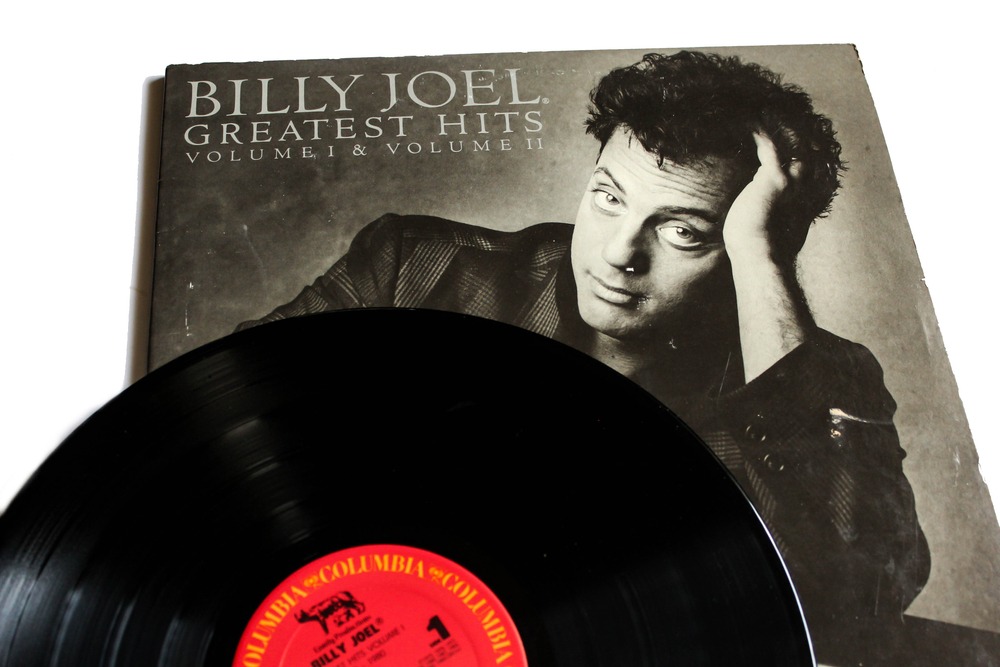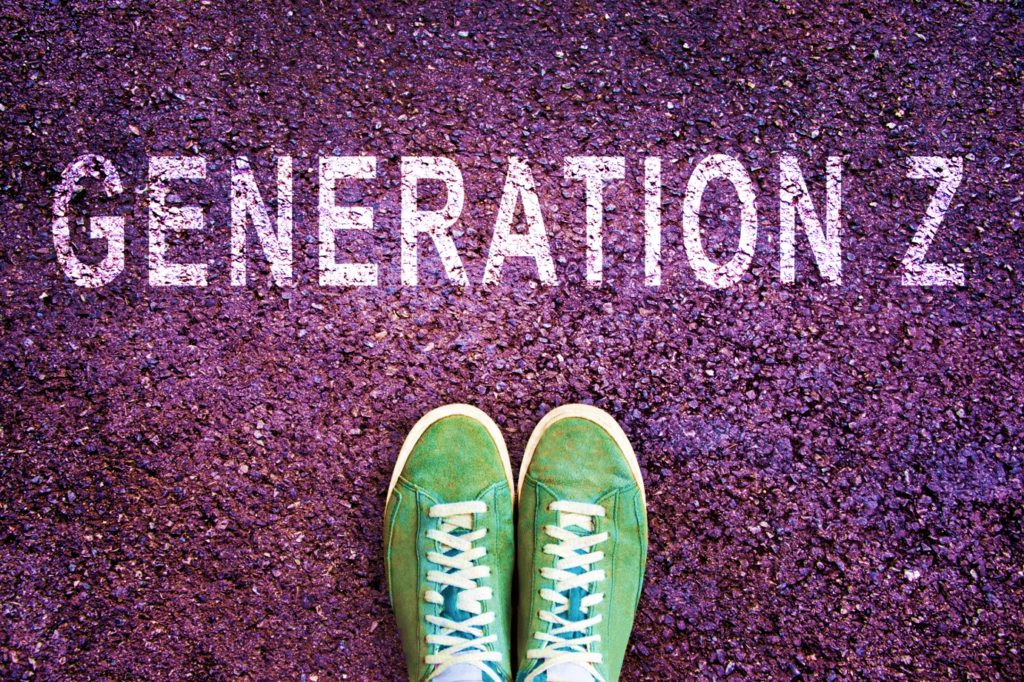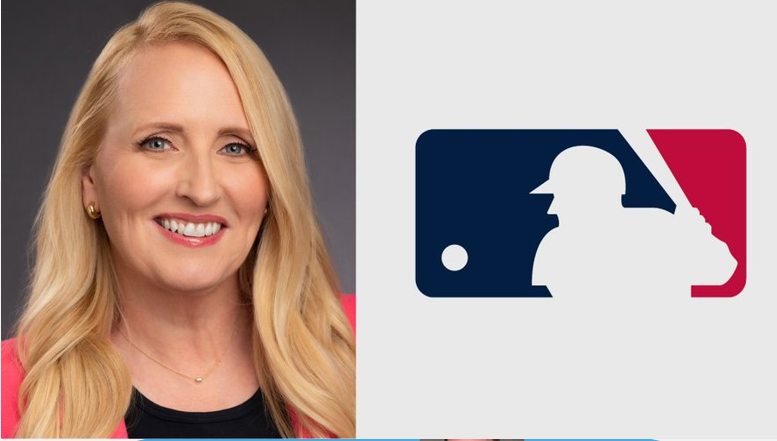
If you ever find yourself in one of those “We have to change formats” meetings – a common occurrence in radio – here’s some free advice from your consultant friend Fred:
Do NOT bring up teens as an option.
In fact, don’t flirt with a format that targets consumers under the age of 25. It is the quickest way to become irrelevant in the conversation, as the other participants will question your basic understanding of demographics, revenue, and the state of the radio industry.
The fact is, radio broadcasters tacitly decided not to pursue teen-targeted formats decades ago. They don’t research teens, talk about Gen Z, or even think about them. The only time teenagers end up impacting their lives is if they’re sitting at the dinner table.
If I had a buck for every time a radio broadcaster explained this true fact to me about his or her teen kids, I’d be rolling in dough:
“They don’t listen to the radio. They don’t even know what a radio IS.”
They often say this in a remorseful but accepting way. After all, why should teens listen to the radio (unless forced to), and that would somehow assume they accidentally left their phones at home.
Last week, I wrote a blog post called “The Agification Of Broadcast Radio.” It tracked radio’s continuous skew toward the safety, comfort, and simplicity of the nostalgia craze. Along with other pop culture platforms, radio is aging.
Data from Edison’s “Share of Ear” research and our Techsureys confirm the median age of core listeners is edging dangerously close to the “54 edge” of the industry’s long-celebrated target demographic. It’s not just Classic Rock and Classic Hits heading for the demographic cliff – it’s the entire industry.
The dependence on tried-and-true – whether it’s the Marvel franchise, “Seinfeld” reruns, or greatest hits albums and cover songs – the familiar blanket of nostalgic programming content clearly trumps all else. The old stuff is easiest to produce and program, and its odds for success are very good.
Of course, that thinking has worked its way into the boardrooms of the recording industry. Which would you rather invest in – an unknown, new boy band from Thailand or Billy Joel’s entire song catalog?
Joel’s entire song catalog?
(If you answered the former, you have my permission to stop reading this post.)
The aging of radio now impacts a significant part of the industry’s stations. How many conventional radio formats reflect Edison’s median TSL line of demarcation? How many have a sizable audience of listeners eligible to join AARP? We don’t even need to do any math – like other traditional media, radio is showing signs of aging out.
Radio broadcasters have already thrown in the towel on Smooth Jazz, Oldies, Soft AC, and other formats more appealing to 55+ communities than TikTok users. At what point will the radio broadcasters make it an imperative to actively legitimize its mature audience to advertisers, agencies, and CMOs? Radio’s 35-64 audience has incredible value, but you’d never know that the way demographic dictates punish stations that lean older.
This a ticking time bomb, getting louder with each passing quarter, “Share of Ear” report, PPM quarterly, and annual Techsurvey.
But there’s another side of the story. And it’s literally the other end of the age spectrum. When Arbitron revealed it would report a 6+ audience when their Personal People Meter methodology became the currency well more than a decade ago, most industry observers scoffed….or wondered what on earth were they thinking? After all, why report a demographic no one buys and that couldn’t be more irrelevant to radio PDs?
 But credit where credit is due. The teen (and pre-teen) demographic has become of paramount importance across industry groups and categories. It is a hot topic, driven largely by Gen Z’s heft and ability to set trends already affecting all of us. In virtually every business sector, research is being conducted to better understand this generation, their mindset, and their marketing preferences.
But credit where credit is due. The teen (and pre-teen) demographic has become of paramount importance across industry groups and categories. It is a hot topic, driven largely by Gen Z’s heft and ability to set trends already affecting all of us. In virtually every business sector, research is being conducted to better understand this generation, their mindset, and their marketing preferences.
Except in radio.
For me, the telling moment came last fall. I was conducting Zoom focus groups among public radio “underwriters” (yes, advertisers) as well as program sponsors. As our lively conversation ended with each respondent’s final words, a furniture retailer posed what turned out to be a provocative question. After lauding our client – a full-service public radio station – he bluntly posed this question:
“What is the station’s Gen Z strategy?”

Others in the group nodded, and wondered the same thing.
Interestingly, there is some movement on the public radio side when it comes to the teen challenge. In a fascinating article that ran in Vanity Fair, highlighting a new NPR hire, Emma Eun-joo Choi (pictured), we learn about the value of giving young people their shot.
Choi now has a podcast on the public radio institution, “Everyone & Their Mom.” It’s a production of the award-winning “Wait, Wait…Don’t Tell Me!” team. She’s a fan of comedy, grew up listening to NPR, worked for the Harvard Lampoon, and is a Korean American.
She’s also 22, and by definition, a card-carrying member of Gen Z.
And NPR is giving her the shot to make her mark on the network – and on public radio in general. Here’s an insightful quote she gave Vanity Fair writer Delia Cai:
“I’m the youngest person in every Zoom room, and that’s weird because I just don’t know what power I have. Power is something I think about a lot these days, because I still think I’m an intern. It’s hard to pitch things or say a joke or say you don’t like something, even as the host, because I feel lucky to be there.”
The experiment is being repeated elsewhere. Late in June, I wrote a post (“Radio Broadcasters Don’t Know Doodly-Squat About Gen Z”). One of the more interesting initiatives was launched by the LA Times. Headquartered in Atlanta, it’s called the “404,” a team of a half-dozen young people charged with creating digital content. Here’s how they describe this mission:
“A major expansion of our audience team…a major investment in our digital growth…(and) a critical step toward attracting news readers.”
And now, the concept may be catching on. Major League Baseball may as well be a newspaper. You can count the reasons why teens aren’t enamored with “The Great American Pastime.” But that isn’t stopping the league from learning what it will take to attract Gen Z fans.

Front Office Sports highlights Karin Timpone (pictured), MLB’s CMO, and an executive greenlighting experiments that may or may not connect with Z’s. Part of it is a learning process, As Timpone readily admits:
“We’re just at the earliest stage of activating (growth strategies), but I can say that we’ll both continue to super-serve the avid fans while also bringing that casual fan a little further into the mix.”
A exec at Yahoo! Media group, Seagram’s, and The Walt Disney Company, Timpone says what everyone in radio inherently knows: it starts with audience research:
“In the past, I’ve started with a very quantitative view around what behaviors drive the most interest. I always started with a behavioral segmentation. It’s almost like the math side of it — the largest addressable market you can get. And what are the behaviors behind these fans? The second step is to wrap and package the right story, the right brand, the right message.”
Sounds familiar. That’s what’s leading MLB to focus on eight youth academies around the country. There’s also a renewed focus on social media, especially around milestones like the All-Star Game and Celebrity Softball Game.
And Timpone is also overseeing research to see how the league can create interactivity around Web3 and the metaverse.
This commitment to “next gen” experimentation is essential to traditional institutions like newspapers and “old school” sports like baseball.
And radio?
A Gen Z strategy is essential, but up to this point, broadcasters won’t bite.
Tomorrow, we’ll explore the stumbling blocks, and why ignoring teens is a strategic recipe for disaster.
- A 2020 Lesson?It Could All Be Gone In A Flash - April 24, 2025
- How AI Can Give Radio Personalities More…PERSONALITY - April 23, 2025
- Can Radio Afford To Miss The Short Videos Boat? - April 22, 2025




“They don’t listen to the radio. They don’t even know what a radio IS.”
My daughter’s radio listening belies this statement. We used to fight over the car radio dial between NPR and the pop station.
You’re an anomaly, Tony. Enjoy it while you can. Thanks for the comment.
The problem is, no one needs to use the radio to get music anymore. For older generations, it’s more effort to use these new-fangled blue teeth contraptions, but for younger generations, it’s seamless. Vehicles are now being manufactured with AM/FM radio being one of the last options for media.
Radio programmers are terrified of this and just ignore the truth. To survive, you’re going to have to build a station that produces content other than music. And you’re going to have to give your audience content from their peers and/or at least only 1 generation older.
There’s so much talent in the younger generations. They grew up with “content creating” and it comes naturally to them. The old guard is going to have to pass the torch eventually or just let the entire industry die.
The clock is ticking.
Here is one answer (not a new answer): “Give them the keys.”
Kids know what they want to hear; you don’t. Find some you can trust not to put the station’s ass in a sling w/FCC, fire up an HD3, and let them run it with light adult oversight. They’ll tell all their friends, who will tell their friends, etc. Minimal cost, no sacrifice of your main signal, and maybe you strike gold (and warm Xperian’s heart).
Sure, the results are unpredictable. Youth is the resource. When Hubbard gave young Dave Kolesar “the keys” to their flagging AM in Maryland (as he told the story to me), they didn’t know what he was going to do with it, other than run his AAA “The Gamut,” but he had earned their faith. And then he instigated the MA3 experiment that might just save AM radio’s bacon. Nothing ventured, nothing gained–and perhaps the whole farm lost.
Give them the keys.” Absolutely true. College radio stations are seeing unprecedented student participation only because they’re invited to play and say (within reason) whatever they want. What’s new is, thanks to streaming, the current crop of college kids seem to know more about music than their predecessorsand enjoy sharing it.
Give them the keys.” Absolutely true. College radio stations are seeing unprecedented student participation only because they’re invited to play and say (within reason) whatever they want. What’s new is, thanks to streaming, the current crop of college kids seem to know more about music than their predecessors.
You could say that up to a certain point in the 1950’s, radio never imagined formats and markets that teens would gravitate to, until DJs like Alan Freed and Dewey Phillips and the like figured out that young white teens dug gritty black blues and R+B, and were listening to it in droves over transistor radios stuck under their pillows at night. And that they were playing their favorites over and over on jukeboxes so Top 40 was born. I still think “if they would build it, they would come” but it would have to really have that exclusive clubhouse feel that was totally better than any other channel or platform that young people nowadays seem to be leaning toward.
AND, importantly, station owners and management would have to be committed to giving it 3 to 5 years to take root. To me, that’s the eternal problem with (particularly commercial) experimentation with format diversity. No patience.
Thanks Fred, for being the straw that stirs the drink. Wake up RADIO!
I love that phrase, “clubhouse feel.” Growing up, we ALL were in that clubhouse. (And you were almost an outcast if you showed up at school and didn’t know what the morning guy on the “clubhouse” station said that morning.) But the parents didn’t have a clue what we were listening to or what we were talking about. And they were fine with that and we were fine with that. “Clubhouse” plus time for kids to find the club just might be a winning combination. Good thoughts, Paul.
Appreciate a little history, Paul, and thanks for the comment. Radio isn’t just late to this party – it’s been a perennial no-show for decades. Like any endeavor that’s new, especially given an audience estranged from the platform, it’s process. Thanks again.
I’ve been thinking about a couple of things, partly in light of Friday’s column…
First, it’s been quite some time, but perhaps U.S. radio should take another look at EDM as a format. Even though it (or really any halfway-new format) couldn’t solve many of the industry’s current problems, EDM (or, at least, EDM-focused Dance) remains a primary format on several broadcasters–especially in western Europe. As it turns out, INRA’s latest topline ratings for Mexico City (for June) have Beat 100.9 (XHSON) in ninth place–even with three CHRs (including sister Oye 89.7 [XEOYE]) ahead of it.
On the other hand, though, Australia’s Triple J has been experiencing a loss of audience recently–especially at the younger end, and perhaps especially in the largest markets. Most telling is that there might be an accompanying rise in the younger end for Smooth FM’s audience. (It’s possible that the recently launched, Hip-Hop/R&B-focused CADA is already making some inroads, too–although it’s probably too soon to be certain of that.)
https://www.theguardian.com/tv-and-radio/2022/aug/08/tuning-out-of-triple-j-why-australias-youth-station-is-losing-its-young-listeners
I know of an Alternative station here in the U.S. that experimented with EDM at night a few years back. My recollection is that it didn’t work out particularly well. I suspect part of the problem is the commercials – annoying under normal circumstances, but especially so with this genre. Thanks for sending along the Guardian story.
At the Tennessee Radio Hall Of Fame induction over the weekend, George Plaster stated that “real radio, the way it was designed, is about community”. A short, simple but a HUGE and TRUE statement. Maybe we should remember that in everything we do. Go where people go. Be seen where people can see you. Do things that people are interested in. ALL people. Young, old, in the middle. Choosing music for your station is easier than ever. There is so much data, it’s hard to make a bad decision. Concentrate on BIG promotions. Take advantage of opportunities when they happen in pop culture. That’s how you remain relevant to any generation. Make your station have a soul. Connect with people. Make them mad, make them laugh, make them cry. I think back to some of my favorite stations growing up and I don’t remember every hit they played or didn’t play, I remember the jocks, the promotions, the stunts, the events. Relying solely on your music doesn’t make you memorable or special anymore. It’s VERY important to get the music right, but if that’s all you care about then your station is just “noise”. Noise no one wants to hear.
Mr. Plaster is a wise man, Jeremy. These are strong comments, and I appreciate you taking time to share them.
I wouldn’t be too hasty with anything. Neither the perception of the problem nor creative solutions. I read the Gladwell cat says we need to get people back in the office because, belonging. It rang a bell with me. That says we need community. Something missing in the whole cocoon thing when you don’t hear anything but your playlists. And lest we not delude ourselves into thinking that GenZ is all one kind of person. They may be growing up with an inborn expectation of diversity and inclusion. But they are still not all the same neither culturally nor regionally. God speed to us all as we guess our way through it.
Check it out. I’m replying to myself. So…maybe we need to take out banners and ads on the audio and video streaming platforms.
Not a bad idea, Leo. That’s most likely the place they’ll even hear of you…if they’re ever going to find you.
We will need all the help and insight we can get, UL. It might start out with actually listening to who they are, what they’re feeling, and what can radio deliver they’re not getting everywhere else. And I expect “community” (and there are lots of ways of defining it) might, in fact, be a cornerstone. Thanks for chiming in.
I can’t wait to read tomorrow’s blog post!
I hope it delivered.
Fred… Fred…my long time friend Fred, thank God you finally got up on your mighty pulpit and preached the truth! I’ve been saying it for years and everybody has been poo pooing it. When I carried my portable radio into the Indy 500 back in May, the
16-year-old at the gate asked me what was that was in my hand? I said “it’s a radio and it gets AM and FM stations that come right out of the speakers and it works really great.” He had a look on his face of wonder and said “ Oh wow that’s really cool.“ Honest to God, he did not know that what I had was a radio! As you so perfectly said it’s time to face the music….pay the piper and realize the reality of our industry that is changing by the HOUR!
Art, I appreciate this. Also, good to see “Radio’s Best Friend” at the MAB Conference at beautiful Crystal Mountain.
I’m 63 and haven’t listened to radio in years. The quality is poor, even in hd. I either plug in a USB stick with days of my own music, use Sirius, or if I have good cell or wifi coverage, stream. Too many commercials on radio, and too much talking. I want the music, not jibber jabber. Plus, it’s a great way to find new music, lot easier than trying to tune a radio while driving.
I agree, radio is becoming irrelevant. Just like broadcast TV and cable.
Thanks for the comment, John. And I’m sorry we lost you at some point along the way..
I most certainly do know what radio is; I’m old enough to remember b&w tv. But I no longer listen to the radio. Music is available through my phone and I don’t have to listen to ads unless I’m in interested in streaming something new. In fact, the price pressures of the diluted streaming market has led me to drop tv, too, except for a few ad-supported options (which are mostly nostalgic). Teen-flation I call it – when the new generation is willing to pay more because they’ve never paid less. Alas, I’m old enough to balk even considering monetary inflation.
Thanks for the comment, James.
Imagine a burger chain asking, ‘How do we get more people to eat our hamburgers?’ You could try advertising, promotions, focus groups–and you might even have some success.
Now imagine a burger chain asking, ‘How do we get these difficult vegetarians to eat our hamburgers?’
The answer is: you can’t, and you’re wasting your time trying.
That’s the problem with radio and Gen Z.
It’s not that Gen Z is avoiding YOUR station–Gen Z is not listening to the radio AT ALL. Anyone who spends any time around young people knows that they are more than happy with Spotify, Apple Music and YouTube….
There are many lapsed Vegans, John, but I get your point. There’s a lot of water under the bridge when it comes to broadcast radio and teens.
Now here’s my contrarian thought. I don’t think Gen Z hates radio – it just has no role in most of their lives. BUT if radio broadcasters actually created something compelling or hired personalities that talked to teens, would it be automatically rejected?
Alas, we may never know.